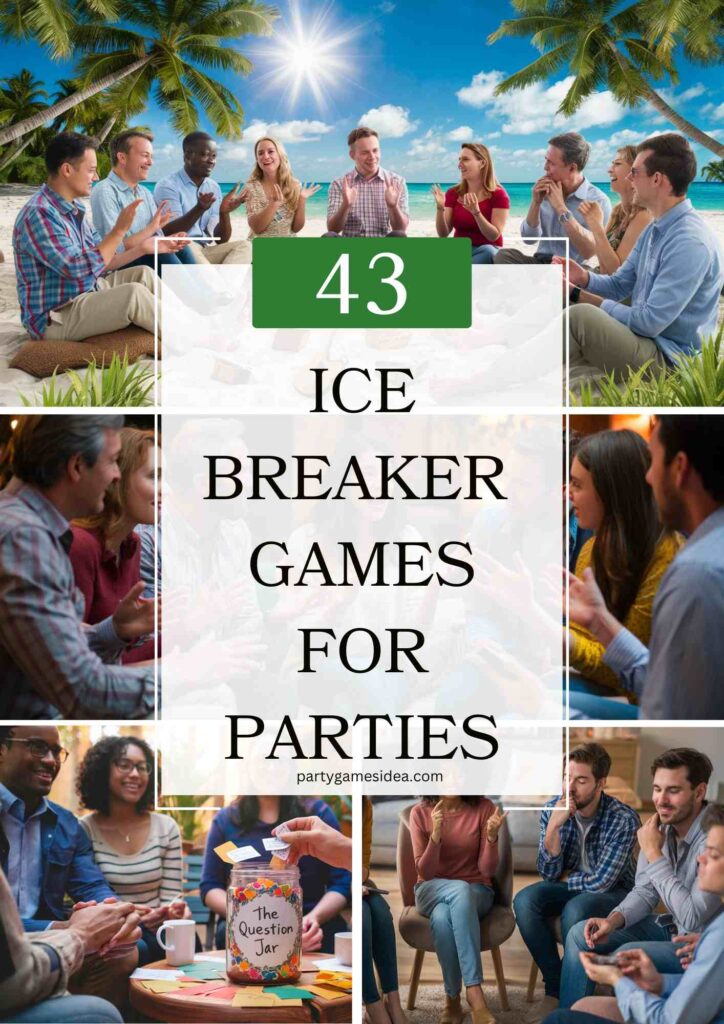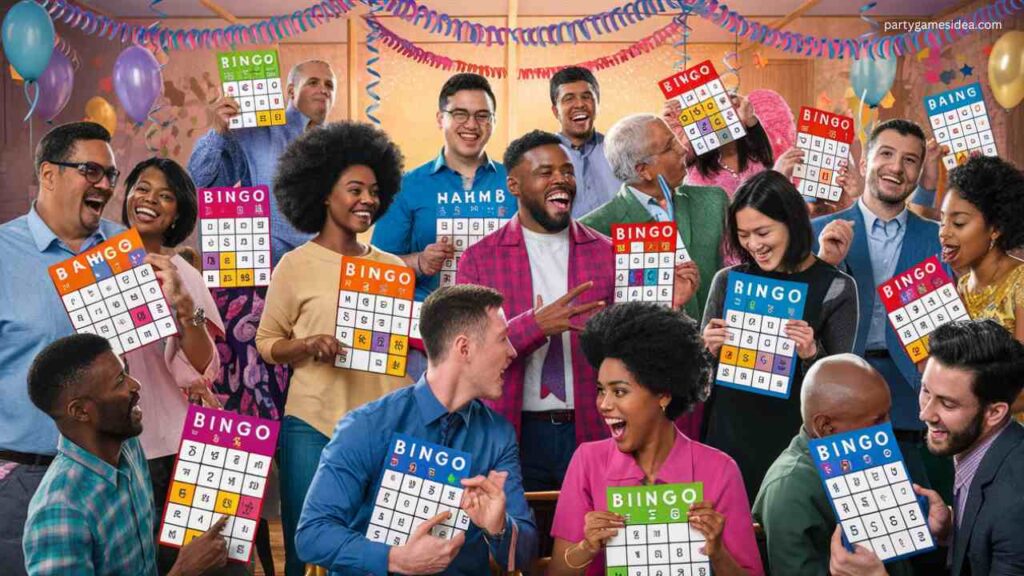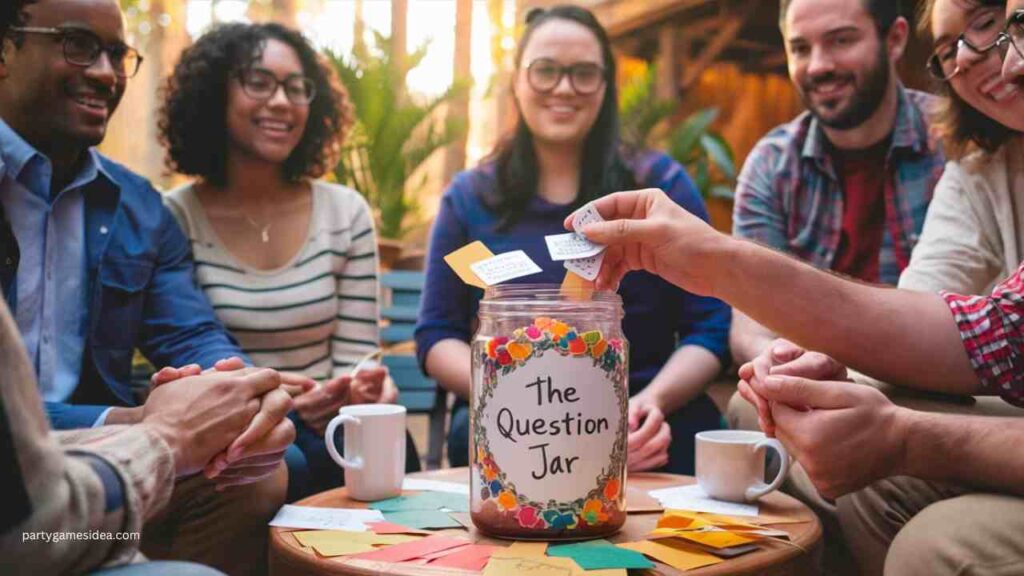Ice Breaker Games For Parties serve as catalysts for social interaction and bonding among individuals in various settings. Their primary purpose is to break down initial barriers and create a comfortable atmosphere where people can engage with each other in a relaxed and enjoyable manner. These games are designed to encourage participation, stimulate conversation, and foster connections among attendees who may be unfamiliar with each other or hesitant to initiate interactions.
The benefits of incorporating ice breaker games into parties are numerous. Firstly, they help alleviate social anxiety and nervousness, especially for individuals who may be attending the event alone or meeting new people. By providing structured activities that promote communication and teamwork, ice breaker games facilitate the development of camaraderie and mutual understanding among participants.
Ice breakers play a crucial role in the success of parties by setting the tone for meaningful interactions and engagement. They help guests feel more comfortable, confident, and connected, leading to increased participation and enjoyment throughout the event. By incorporating ice breaker games, hosts can create a dynamic and inclusive social environment where people can forge new friendships, strengthen existing relationships, and make lasting memories.
Ice Breaker Games For Parties
Ice breaker games are a fantastic way to kick off a party or social gathering. They help break down barriers, encourage interaction, and create a fun and lively atmosphere where people can connect and get to know each other better. Here are some engaging Ice Breaker Games For Parties that are perfect for parties of all sizes and types:
1. Name Bingo
Name Bingo is a lively Ice Breaker Games for parties and gatherings. Participants are given bingo cards with squares containing various descriptors like “Has traveled to Europe,” “Plays a musical instrument,” or “Is left-handed.” The goal is to mingle and find people who match the descriptions in the squares, writing their names in those squares. This game not only helps break the ice but also encourages people to learn each other’s names and discover commonalities, fostering connections and conversations throughout the event.
To play Name Bingo, you’ll need the following:
- Bingo Cards: Create or print bingo cards with a grid of squares, each containing a different descriptor or characteristic.
- Markers or Pens: Participants will need markers or pens to write down names in the squares they match.
- List of Descriptors: Prepare a list of descriptors or characteristics to fill the squares on the bingo cards. These can range from hobbies and travel experiences to unique traits or preferences.
- Instructions: Provide clear instructions on how to play the game, including how to fill out the bingo cards and what constitutes a win (e.g., completing a row, column, or diagonal).
- Space for Mingling: Ensure there’s enough space for participants to move around and mingle with each other to find matches for the descriptors on their bingo cards.
- Prizes (Optional): Consider offering small prizes for the first person to complete a bingo or for multiple winners, adding an extra element of fun and motivation to the game.
2. Two Truths and a Lie
Two Truths and a Lie is a classic ice breaker game that sparks conversation and laughter at parties. In this game, each participant takes turns sharing three statements about themselves: two truths and one lie. The other players then try to guess which statement is the lie. This game encourages storytelling, observation, and critical thinking as players share interesting facts about themselves while trying to deceive others with their lie. It’s a fun way to learn more about each other and break down initial barriers in a social setting.
To play the Two Truths and a Lie game, you don’t need many materials. Here’s what you’ll need:
- Participants: Gather a group of people who are willing to participate in the game.
- Space: Ensure you have enough space for everyone to comfortably sit or stand in a circle or around a table.
- Instructions: Provide clear instructions on how the game works. Explain that each participant will share three statements about themselves: two truths and one lie.
- Listening Skills: Encourage active listening among participants as they try to discern which statement is the lie.
- Guessing Mechanism: Decide on a method for participants to guess which statement is the lie, such as raising hands or verbally stating their guesses.
- Optional: You can use a timer to limit the time each participant has to share their statements or to keep the game moving at a lively pace.
Overall, the game mainly relies on the participants’ engagement, communication skills, and ability to detect deception, making it a simple yet engaging ice breaker for parties and social gatherings.
3. Human Bingo
Human Bingo is an interactive ice breaker game that encourages mingling and conversation at parties. Participants are given bingo cards with squares containing interesting facts or characteristics such as “Has a pet cat,” “Speaks more than two languages,” or “Has run a marathon.” The objective is to move around the room and find people who match the descriptions in the squares, asking them to write their names in those squares. This game not only helps break the ice but also promotes learning about each other’s backgrounds, hobbies, and experiences, fostering connections and creating a lively atmosphere during the event.
To play Human Bingo, you’ll need the following:
- Bingo Cards: Create or print bingo cards with a grid of squares, each containing a different interesting fact, characteristic, or experience (e.g., “Has a pet cat,” “Speaks more than two languages,” “Has traveled to Asia,” etc.).
- Markers or Pens: Participants will need markers or pens to write down names in the squares they match.
- List of Descriptions: Prepare a list of interesting facts or characteristics to fill the squares on the bingo cards. Make sure the descriptions are varied and reflective of the diverse backgrounds and experiences of the participants.
- Instructions: Provide clear instructions on how to play the game, including how to fill out the bingo cards, what constitutes a win (e.g., completing a row, column, or diagonal), and any additional rules or guidelines.
- Space for Mingling: Ensure there’s enough space for participants to move around and mingle with each other to find matches for the descriptions on their bingo cards.
- Prizes (Optional): Consider offering small prizes for the first person to complete a bingo or for multiple winners, adding an extra element of fun and motivation to the game.
4. The Great Wind Blows
To play “The Great Wind Blows” game, you don’t need many materials, making it easy to organize and play spontaneously. Here’s what you need:
- A Group of Participants: Gather a group of people willing to participate in the game. The game works best with at least five to ten players but can accommodate larger groups as well.
- Space: Ensure you have enough space for all participants to sit in a circle comfortably. A living room, outdoor area, or any open space will suffice.
- Clear Instructions: Explain the rules of the game to all participants before starting. Make sure everyone understands how the game progresses and what actions are required when the statement is made.
- Creative Statements: Prepare a list of interesting and diverse statements that participants can use during the game. These statements can be fun facts, preferences, experiences, or anything that allows players to find commonalities or differences among themselves.
- Optional Music: Playing background music can add to the atmosphere and excitement of the game, but it’s not necessary.
That’s all you need to play “The Great Wind Blows”! It’s a simple yet entertaining game that fosters interaction, laughter, and getting to know each other better.
5. The Question Jar
The Question Jar game is a simple yet engaging ice breaker that sparks conversations and encourages sharing among participants. To play, prepare a jar filled with fun and thought-provoking questions. Each person takes a turn picking a question from the jar and answers it aloud for the group. Questions can range from light-hearted inquiries about favorite movies or foods to deeper reflections on personal experiences or aspirations. This game not only helps people get to know each other better but also creates a relaxed and inclusive atmosphere where everyone can contribute and connect through shared stories and insights.
To play The Question Jar game, you’ll need the following:
- A Jar or Container: Use a jar, bowl, or any container to hold the questions. Make sure it’s large enough to hold several folded pieces of paper.
- Question Cards: Prepare question cards by writing down a variety of questions on small pieces of paper. Include a mix of light-hearted, fun questions, as well as deeper, more thought-provoking ones.
- Writing Utensils: Provide pens or markers for participants to write their answers if they prefer to do so. This step is optional but can enhance engagement.
- Instructions: Clearly explain the rules of the game to participants, including how to pick a question from the jar, take turns answering, and encourage respectful listening and sharing.
- Optional Timer: Consider using a timer to limit the time each person has to answer a question. This can keep the game moving and ensure everyone gets a chance to participate.
- Optional Decorations: To add a festive touch, you can decorate the jar or container with colorful ribbons, stickers, or labels that say “Question Jar.”
Overall, The Question Jar game requires minimal preparation and materials but offers a fun and interactive way for people to connect and learn more about each other.
6. Desert Island Scenario
The Desert Island Scenario game is a creative and engaging ice breaker where participants imagine themselves stranded on a desert island and must choose three things to take with them. Players take turns sharing their choices and explaining why they picked those specific items. This game encourages creativity, sparks interesting discussions, and provides insights into each person’s priorities and preferences. It’s a fun way for people to connect, share stories, and learn more about each other’s personalities in a lighthearted setting.
To play the Desert Island Scenario game, you don’t need many materials, but you do need the following:
- Imagination: Participants should be ready to think creatively and come up with imaginative choices for the items they would take to a desert island.
- Prompt Cards or Discussion Guide: Prepare prompt cards or a discussion guide with questions like “If you were stranded on a desert island, what three things would you take with you?” to help kickstart the game and guide the conversation.
- Space for Sharing: Ensure there’s a space or setting conducive to group sharing and storytelling, where participants can comfortably discuss their choices and reasons behind them.
- Optional Props: You can enhance the game with props related to survival on a desert island, such as visual aids or thematic decorations, to add a playful touch to the scenario.
Overall, the game primarily relies on participants’ creativity and willingness to engage in storytelling and sharing, making it a simple yet enjoyable ice breaker for parties and social gatherings.
7. Who’s Missing?
Who’s Missing? is a engaging ice breaker game that challenges participants’ observation skills and attention to detail. In this game, players sit in a circle with their eyes closed while the host removes one person from the group. When players open their eyes, they must guess who is missing. This game encourages interaction, laughter, and quick thinking as participants try to identify the missing person based on subtle clues or hints. It’s a fun and interactive way to kick off a party or gathering while encouraging participants to pay attention to their surroundings.

Hi, I’m Hailey Say, the proud mom and owner of PartyGamesIdea.com. As a dedicated party designer and an expert in party ideas, I have a deep passion for crafting memorable and enjoyable experiences for every occasion. From holiday games to baby showers, bridal showers, bachelor parties, group gatherings, and more, I specialize in creating unique and fun party ideas that cater to all age groups and interests.
With an extensive collection of ideas ranging from printable games, teen and adult games, kids’ party activities, birthday party games, girls’ games, memory games, family games, and outdoor games, I aim to make every event special. My expertise also extends to themed parties such as dinner parties, brunch parties, graduation celebrations, college parties, and fun night games.
On PartyGamesIdea.com, I share my passion and creativity, helping people turn their party visions into reality. With years of experience and a keen eye for detail, I am committed to making your event planning process enjoyable and stress-free. Join me on PartyGamesIdea.com, and together, we’ll create unforgettable memories for you and your loved ones.











